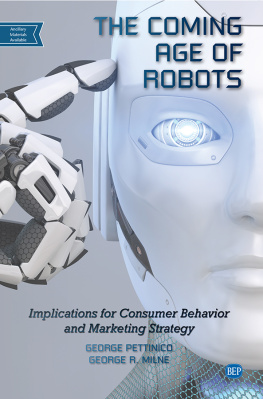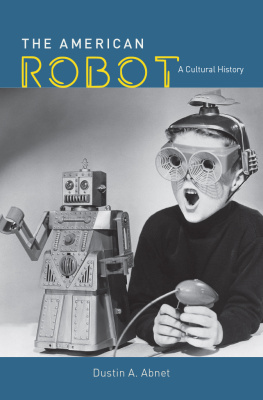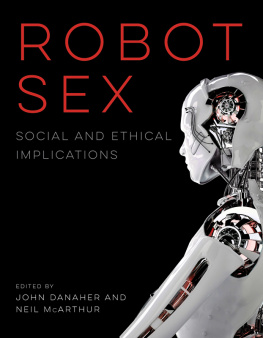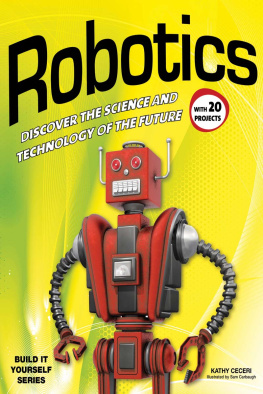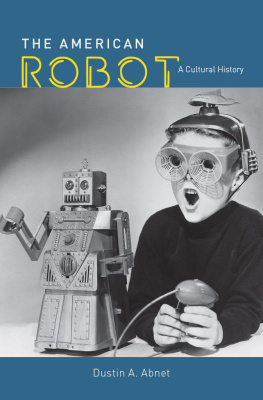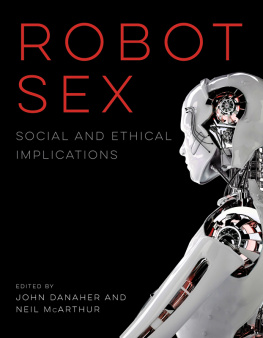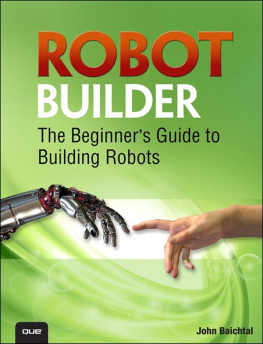The Coming Age of Robots
The Coming Age of Robots
Implications for Consumer Behavior and Marketing Strategy
George Pettinico, PhD
Rosenblum Endowed Assistant Professor of Marketing
School of Business
Plymouth State University
gmpettinico@plymouth.edu
George R. Milne, PhD
Carney Family Endowed Professor of Marketing
Isenberg School of Management
University of Massachusetts Amherst
milne@isenberg.umass.edu

The Coming Age of Robots: Implications for Consumer Behavior and Marketing Strategy
Copyright Business Expert Press, LLC, 2020.
All rights reserved. No part of this publication may be reproduced, stored in a retrieval system, or transmitted in any form or by any meanselectronic, mechanical, photocopy, recording, or any other except for brief quotations, not to exceed 250 words, without the prior permission of the publisher.
First published in 2020 by
Business Expert Press, LLC
222 East 46th Street, New York, NY 10017
www.businessexpertpress.com
ISBN-13: 978-1-95152-768-6 (paperback)
ISBN-13: 978-1-95152-769-3 (e-book)
Business Expert Press Marketing Collection
Collection ISSN: 2169-3978 (print)
Collection ISSN: 2169-3986 (electronic)
Cover and interior design by S4Carlisle Publishing Services Private Ltd., Chennai, India
First edition: 2020
10 9 8 7 6 5 4 3 2 1
Printed in the United States of America.
Dedication
To Sandy, William, and Andrea
To Shalini, Patrick, Courtney, and Ankrish
Abstract
Over the next 20 years, the presence of robots will dramatically increase in our daily lives. Unlike the first wave of automation, which took place deep inside factories and warehouses, this next wave will be up close and personal. Eventually, we will have robots in our homes, schools, stores, hotels, restaurants, hospitals, city streets pretty much everywhere. They will serve as maids, gardeners, companions, waiters, security guards, journalists, nurses, teachers, playmates, receptionists, chauffeurs, soldiers, and prostitutes. And that is just a few of the roles robots will assume. These robots will be intelligent, autonomous, communicative, emotional, and will continually progress in their abilities. Ready or not, its coming. And sooner than you might think.
This book describes what we can expect in terms of robot advances over the next two decades, particularly in the area of human-interactive robots. We provide an in-depth look at how American consumers will react to this dramatic social, economic, and marketplace revolution. Our insights come from national surveys we conducted with over 2,700 Americans, as well as a thorough review of existing academic research and expert predictions. We provide suggestions for acceptable robot roles, robot design, and the optimal marketplace approaches to successful human-robot interactions and, yes, even successful human-robot bonding. This book provides valuable insights for robot manufacturers, companies considering using robots in consumer-facing roles and for consumers themselves who will be increasingly interacting with robots in their everyday lives. If you want to understand our future, you need to understand robots.
Keywords
robots; robotics; artificial intelligence; affective computing; androids; consumer behavior; marketing; customer service
Table of Contents
A robot revolution is coming, and it is going to have a massive impact on all of us.
Over the next couple of decades, the presence of robots will dramatically increase in our daily lives. This is not a science fiction story. This is a hard-nosed prediction voiced by the roboticists, artificial intelligence (AI) developers, and others who are working tirelessly to create this future. Robots have already revolutionized factories and warehouses. But that robot revolution, while displacing millions of workers and revamping the labor force, remained mainly hidden from everyday view. The upcoming robot revolution will be much more up-close-and-personal. Robots will soon become a highly visible feature in the daily lives of the average consumer.
The expectation is that over the next two decades, robots will significantly increase their presence in our homes, doing many of our chores for us. They will become companions to the elderly. They will babysit and play with our children. They will be the receptionists who greet us in office buildings. They will bring us our room service in hotels. In stores, they will help us find the products we are looking for. They will also serve as waiters, bartenders, security guards, journalists, nurses, phlebotomists, teachers, chauffeurs, soldiers, and prostitutes. And those are just some of the roles robots will assume. Many of these robots, driven by remarkable advances in artificial intelligence, will be quite smart. They will recognize us by name when we come home from work. They will have conversations with us. They will sense our emotions and appropriately react to them. They will have their own unique personalities. Some will retain a distinctly mechanical look, while others will look more human. For the past several generations, society has been through dramatic technological changes that have transformed how we live. However, the coming robot revolution will lead to social and economic changes unlike anything we have seen before.
The very early stages of this revolution are already visible. Many of you reading this have by now noticed robots cruising around your local Walmart and/or grocery store, looking for spills in the aisles or checking inventory. Some of you may have already stayed at a hotel where your room service was delivered by a robot. Some of you may have noticed the supply delivery robots scurrying around the floors of large hospitals. If any of you were in China or Japan, you may have watched a humanlike robot delivering the news on television. Or, you may have seen another very humanlike robot named Sophia making the rounds on talk shows, having spontaneous conversations with the hosts.
This book describes what we can expect in terms of robot advances over the next 20 years. Our focus in writing this book, however, is to examine the human side of the equation, namely, how people are likely to react to the coming robot revolution. To do this, we conducted several national surveys, involving over 2,700 adult Americans. We also conducted in-depth, in-person interviews with dozens more, to dig even deeper. In addition, we scoured academic journals, magazines, and conference proceedings that also studied potential human responses to the coming robot revolution. As far as we can tell, this is the first book that puts all this information together to offer a complete picture of the likely human reaction to our swiftly approaching robot future. As two marketing professors, we look at this issue via a consumer framework. Throughout the book, we offer insights on the impact of this robot revolution on consumer behavior, customer service, and marketing strategy.
In Chapter 1, we describe the general expectations for the coming robot future. In Chapter 2, we explore the impact on consumer perceptions of robot portrayals in the entertainment media, as well as the first generation consumer-facing robots in the marketplace and how they might be impacting current public views. In Chapter 3, we discuss the fundamental hopes and fears people have regarding a growing role for robots. In Chapter 4, we distinguish between the roles consumers will easily and will not so easily accept robots playing in their lives, in the marketplace, and in their communities. Chapter 5 does the same, though focusing exclusively on the health care industry (likely the tip of the spear for the robot revolution). Chapter 6 examines consumer reactions to different physical designs for robots. Chapter 7 dives deeper into the various factors that will help promote or hinder the development of meaningful relationships between humans and robots. Chapter 8 profiles several key robot manufacturers and their plans for the future. Finally, Chapter 9 provides concluding remarks, offering guidance (our Five Laws of Consumer-Robot Interactions) to companies making and planning to use robots in customer-facing roles.

